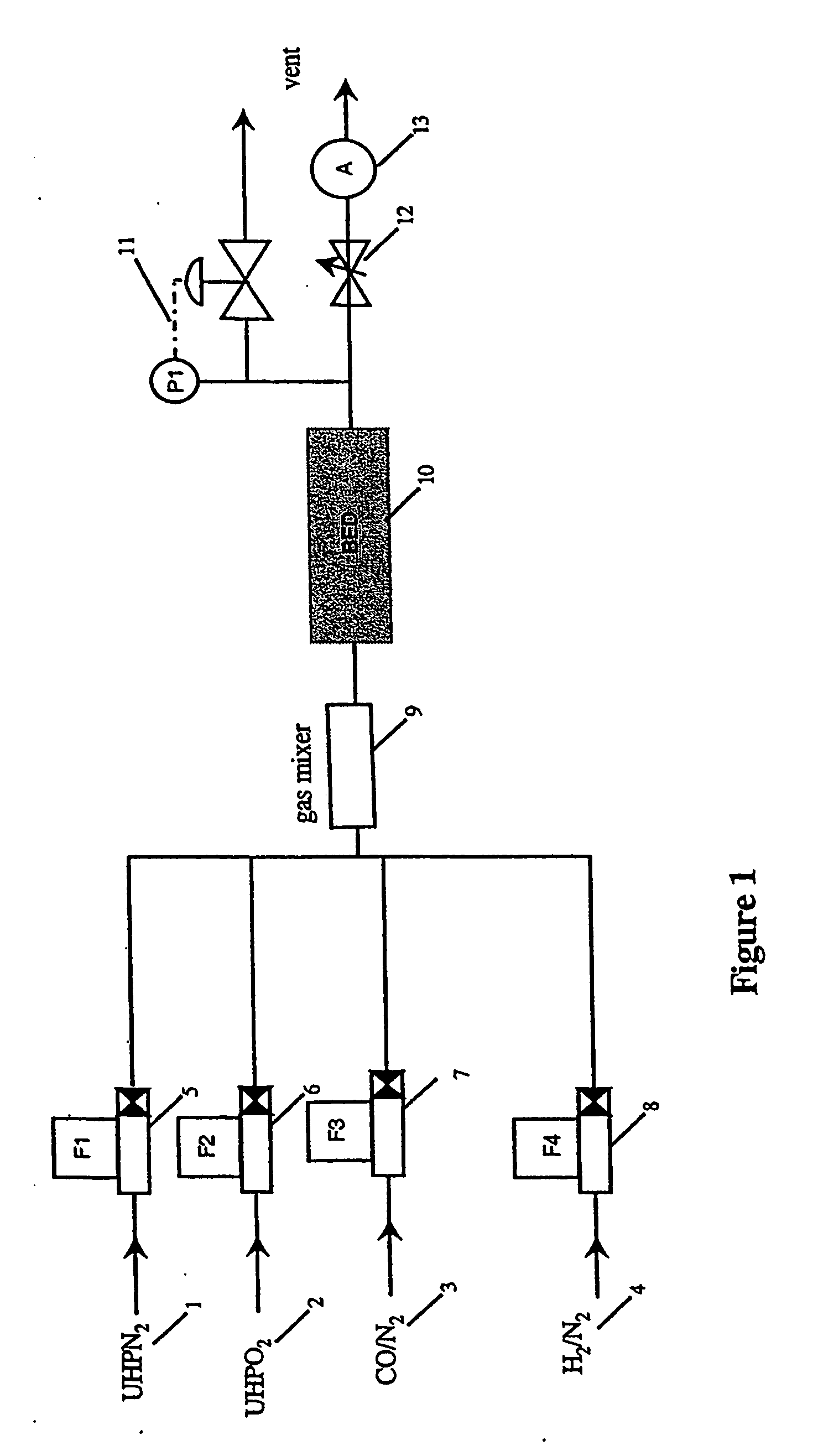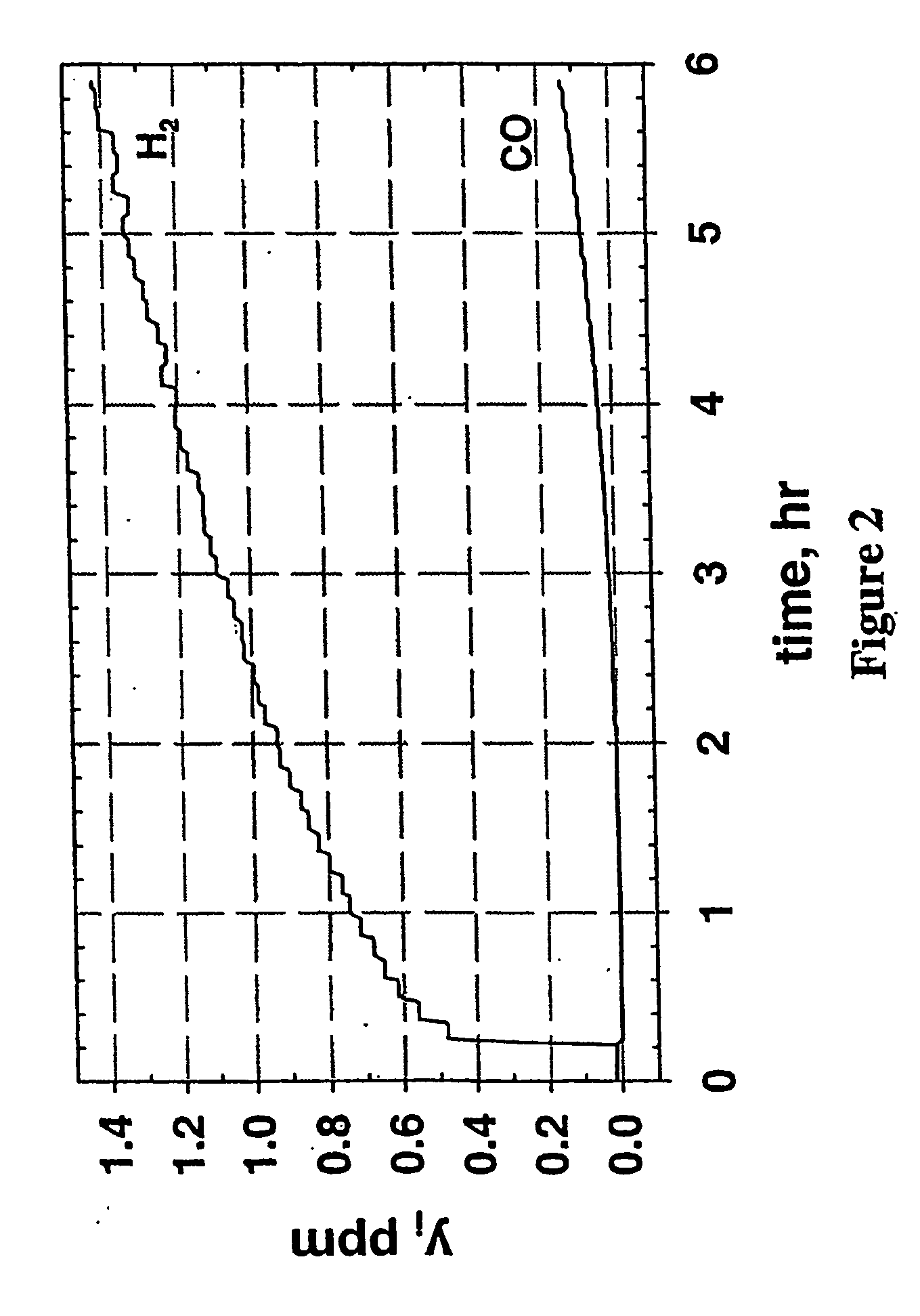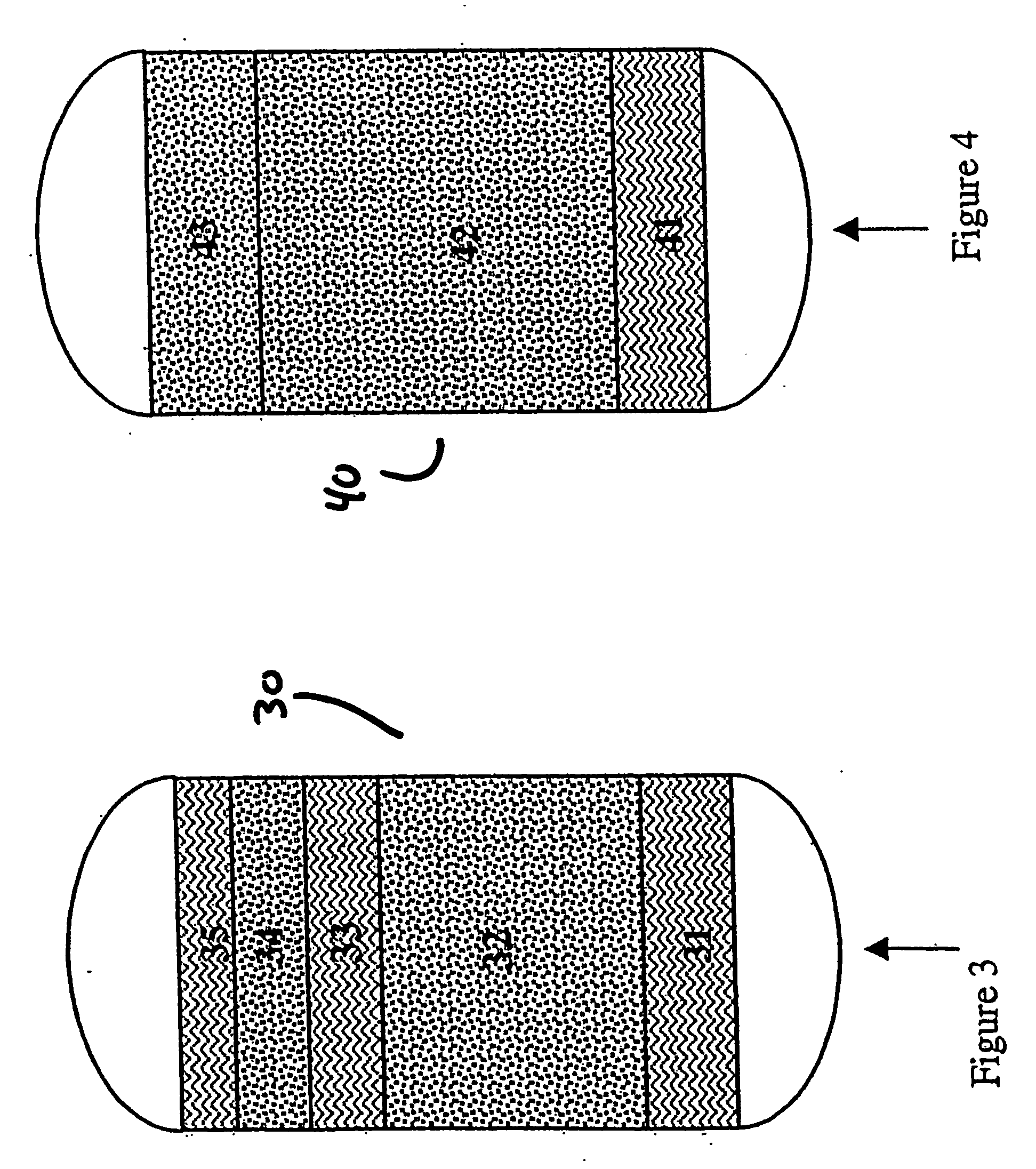Production of high purity and ultra-high purity gas
- Summary
- Abstract
- Description
- Claims
- Application Information
AI Technical Summary
Benefits of technology
Problems solved by technology
Method used
Image
Examples
example 1
Outside the Scope of the Invention
[0105] The natural adsorbents (clinoptilolite and chabazite) were obtained from Steelhead Specialty Minerals, WA. Synthetic zeolites were obtained from various manufacturers: Zeolyst (HZSM5), Zeochem (CaX) and UOP (13X, LiX, 5AMG). All of the adsorbents were thermally activated at 350° C., 1.0 bara pressure and under N2 purge for approximately 16 hours before each test. After regeneration the adsorbents were allowed to cool to 27° C. This group of adsorbents presents a cross section of adsorbent characteristics known to effect adsorption properties, e.g. Si / Al, micropore channel opening size, zeolite structure type, number and type of cations, etc. Breakthrough tests were performed at the conditions described above to saturation using 1.0 ppm CO in N2 or He. Breakthrough time was determined at 100 ppb CO. The results are summarized in Table I.
TABLE IFlowTycoBedtb(2)Xco(3)Adsorbentslpm?CCarrier(1)ppmcmminmmol / gClinoptilolite20.427N21.022.91.4 × 10...
example 2
[0108] Several zeolites containing exchanged Ag, Cu and Zn cations were tested as described above to evaluate the working CO capacity. AgX (P / N 38,228-0) was obtained from Aldrich, while clinoptilolite (TSM-140) and mordenite (large-pore from UOP) were exchanged in small-scale laboratory columns. The extent of exchange was determined by inductively coupled plasma (ICP) analysis. Exchanged samples were air-dried and then activated overnight in a dry N2 purge at 350° C. Breakthrough tests were conducted using a 5.9 cm long column filled with adsorbent and subjected to 2.0 ppm CO in synthetic air (79% N2 / 21% O2) at 27° C. and 7.9 bar, flowing at a rate of approximately 21 slpm (78.7 mol / m2s).
[0109] The amount of H2 in the feed for each test is given in Table II along with the results of the breakthrough tests. The breakthrough time (tb) and the working capacity (XCO) were determined at a CO breakthrough concentration of 100 ppb.
TABLE IIXco% COSize@yco =removal%USYH2100 ppbtb@yco =Ad...
example 3
[0117] Samples of commercially available AgX (Ag400B3), Ag-mordenite (Ag900E16) and AgY (Ag600E16) were obtained from C*CHEM, A Division of Molecular Products, Inc., Lafayette, Colo. AgX was also prepared by exchanging 13X HP zeolite with Ag to various Ag-exchange levels (designated AgX (HP)). AgA was prepared by exchanging 4A zeolite with Ag. These materials and the corresponding Ag exchange levels are given in Table III along with the breakthrough time and CO working capacity.
TABLE IIIAg-Xcoexch.Size@yco = 100 ppbtb% COAdsorbent%US Meshmmol / ghrremovalAgX100 10 × 180.0515.599.0(Ag400B3)AgX (HP)9510 × 180.1313.399.1AgA94 8 × 120.0192.298.4Ag-Mor402.0 mm*0.00960.8597.9AgY611.7 mm*0.0181.498.8
*extrudate diameter
[0118] Breakthrough tests were performed at the same conditions as those of Example 2, except that 3.0 ppm H2 was present in the feed for all tests. The results of Table III are for the first breakthrough after activation. The AgX (Ag400B3) performance agrees well with that ...
PUM
| Property | Measurement | Unit |
|---|---|---|
| Temperature | aaaaa | aaaaa |
| Fraction | aaaaa | aaaaa |
| Fraction | aaaaa | aaaaa |
Abstract
Description
Claims
Application Information
 Login to View More
Login to View More - R&D
- Intellectual Property
- Life Sciences
- Materials
- Tech Scout
- Unparalleled Data Quality
- Higher Quality Content
- 60% Fewer Hallucinations
Browse by: Latest US Patents, China's latest patents, Technical Efficacy Thesaurus, Application Domain, Technology Topic, Popular Technical Reports.
© 2025 PatSnap. All rights reserved.Legal|Privacy policy|Modern Slavery Act Transparency Statement|Sitemap|About US| Contact US: help@patsnap.com



